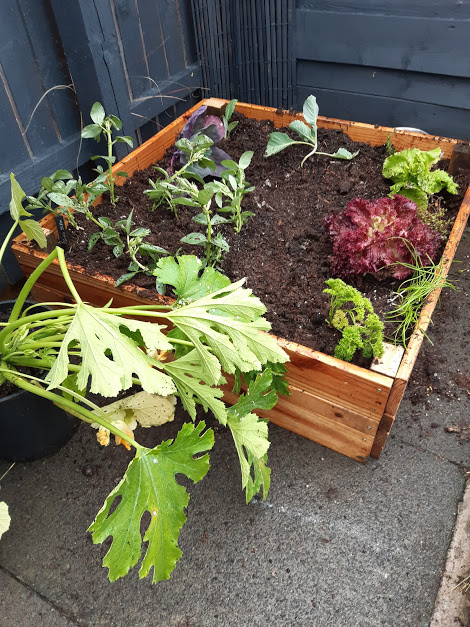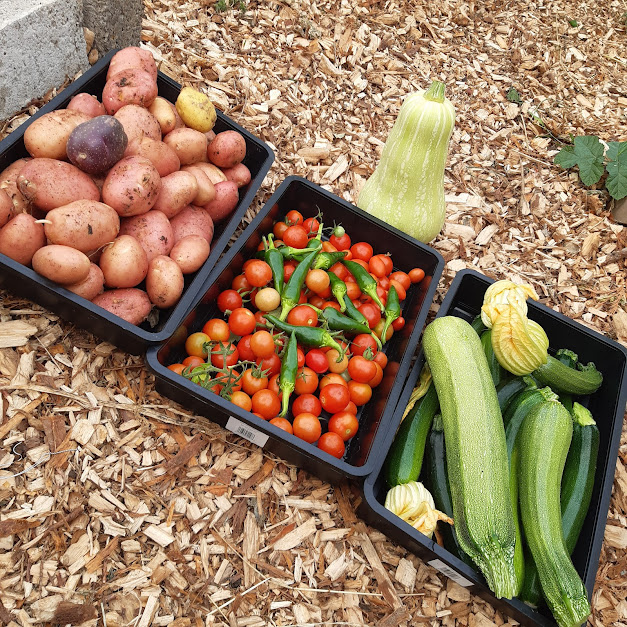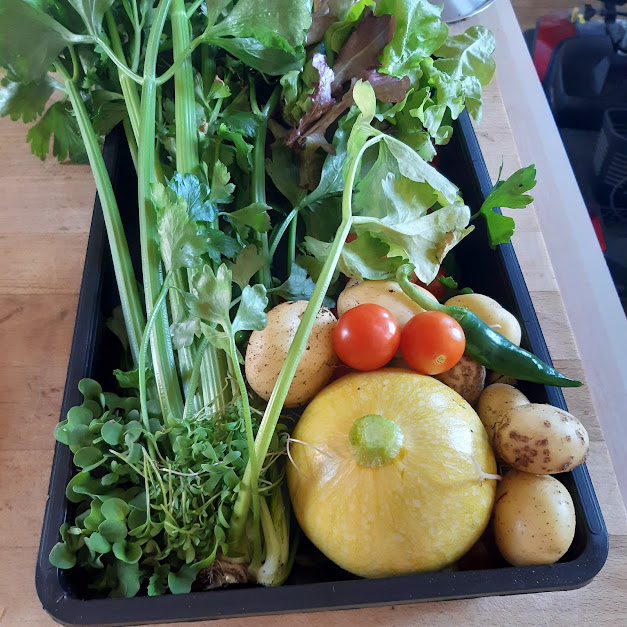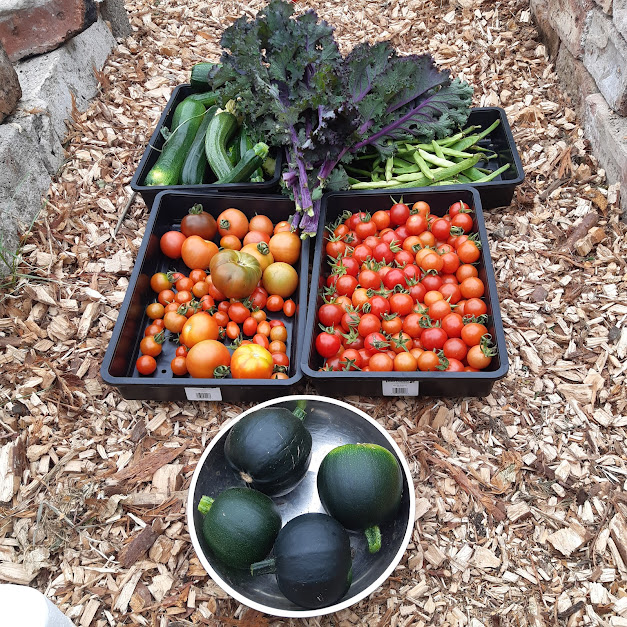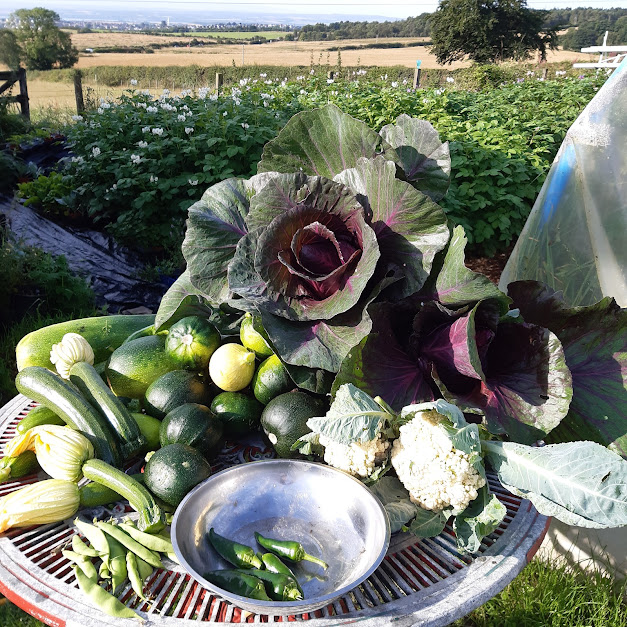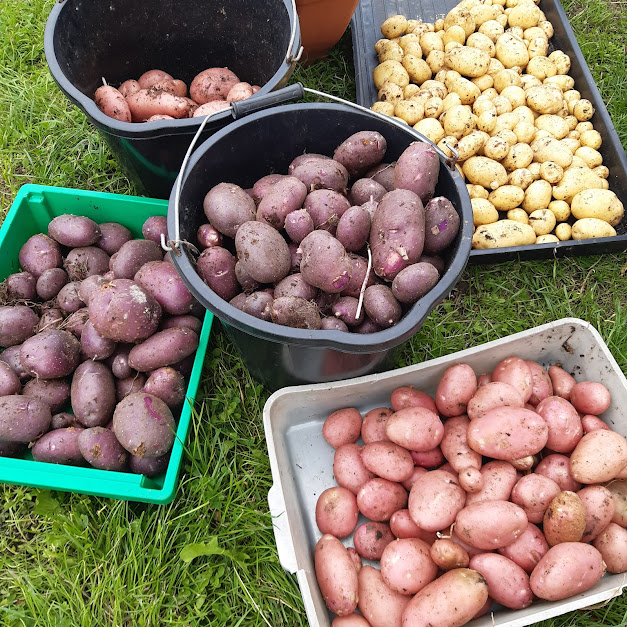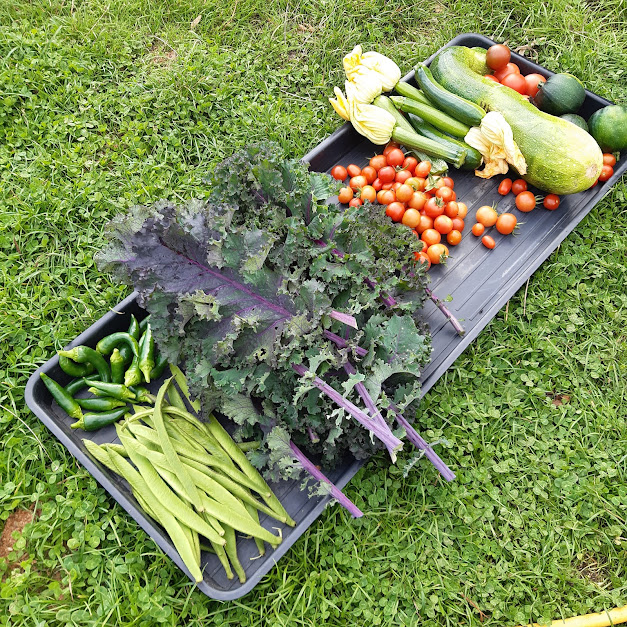What happens when you cover grass for a month?
At the beginning of August, I was interested to see how long it would take to kill grass under black plastic. This is established, long meadow grass. It takes about a month, and probably two for it to breakdown further.
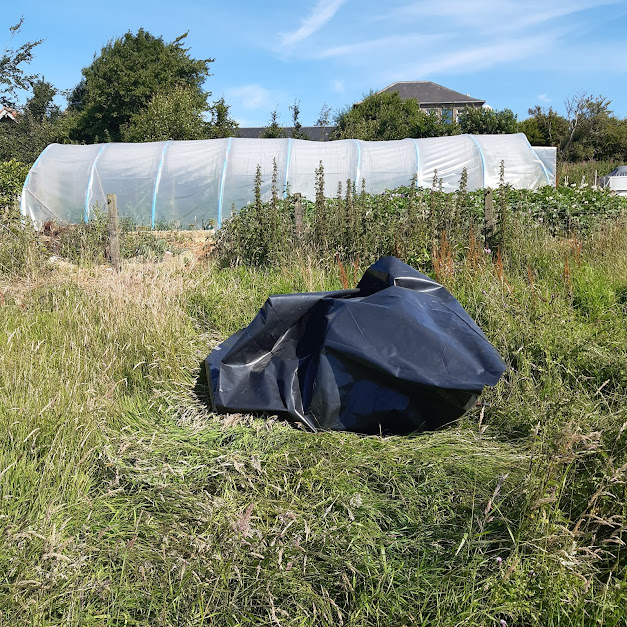
Before 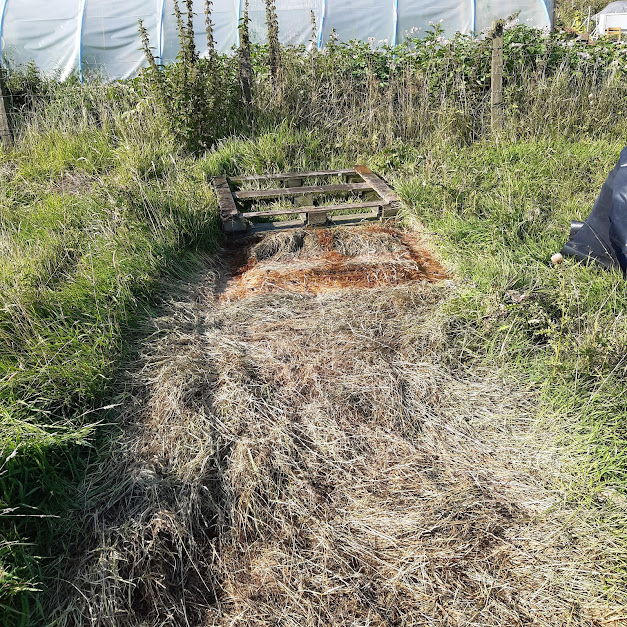
After one month
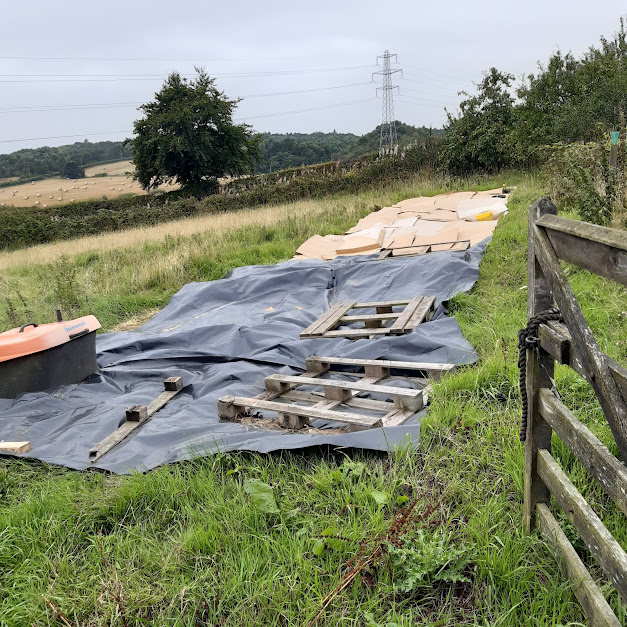
The grass is covered with plastic and cardboard ready for loads of compost, and if I can afford it, another poly tunnel.
194lb donated in August
This month figures have been boosted by potatoes and plums. All organic and all delicious. It’s remarkable what can be grown in a relatively small space.
Beautiful, tasty veggies, grown organically and donated
The potatoes are delicious, and they taste as good as they look; I’ve tried some to make sure.
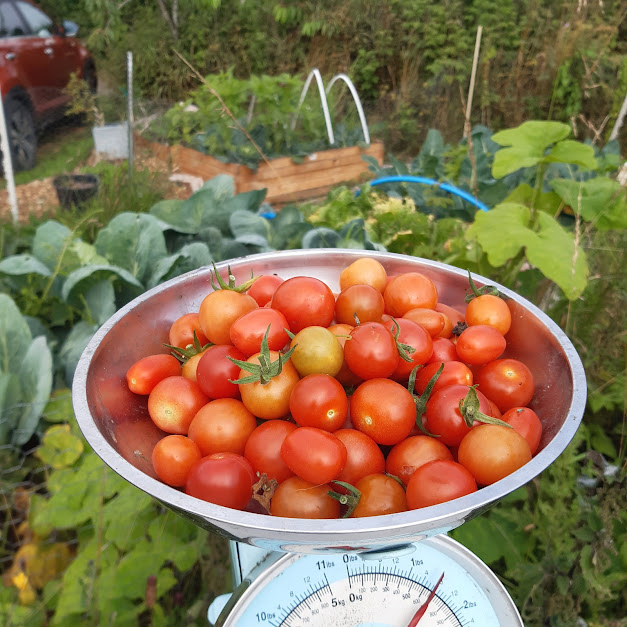
Made with Rice, Mold and sugar
The organic workshop had to start with the basic understanding that living soils and plant health are critical to good vegetables. Not just pristine but healthy; not just from a plant view point and when considering diet, gut and mental health. They are linked together.
Doing research the most frightening thing is that without soil microbes, all life on this plant would cease to exist. Without microbes plants can’t survive and without plants, well, that’s kinda obvious; no rump steak, chips or beer. I’m making light of a catastrophe.
One way of increasing soil microbes is to lift them from an established area, like a deciduous wood, let them multiply and then store them in bottle. IMO (Indigenous Micro Organisms.) #1 and #2 is the start of the process.
Unfortunately I did not take a photo of the lovely bloom of IMO #1 that had collected. It’s mixed with equal weights of dark brown sugar and allowed to ferment for a couple of weeks, strained and it’s now IMO #2. This is a bottle filled with shelf stable micro organisms that can be added to a bed, foliar spray or compost.
OHN, Oriental Herbal Nutrient takes a little bit to time to make and is now part of the workshop. The process will be split between the two classes. This class hydrated Angelica root with beer, crushed garlic and mixed it with an equal weight of brown sugar. The next class will do the other amendments for OHN, ginger, liquorice root, cinnamon and turmeric if I can find any fresh.
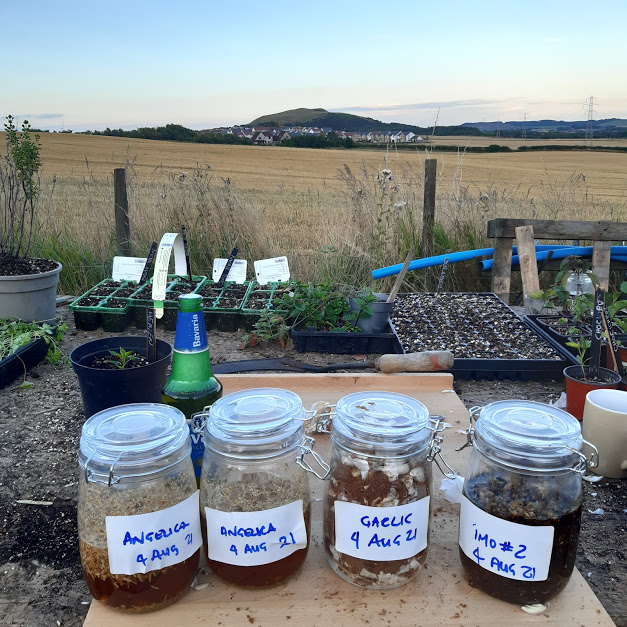
Space saving, easy and cheap way to plant your Lettuce
The second beginners workshop covers seeds and planting up. This includes separating and potting on some live supermarket herbs, about a dozen bay trees planted from seed in a tiny pot and planting seedlings grown here into a rain gutter.
The compost mix is mushroom compost, with perlite for drainage and chicken manure pellets for fertility.
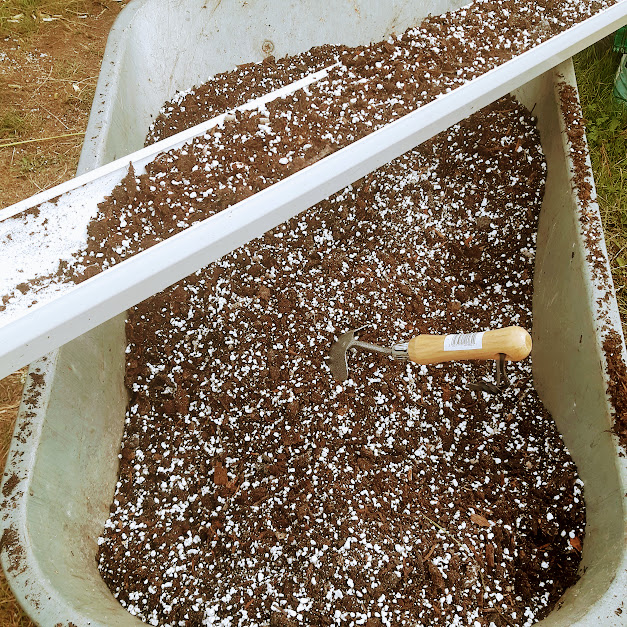
Filling the gutter 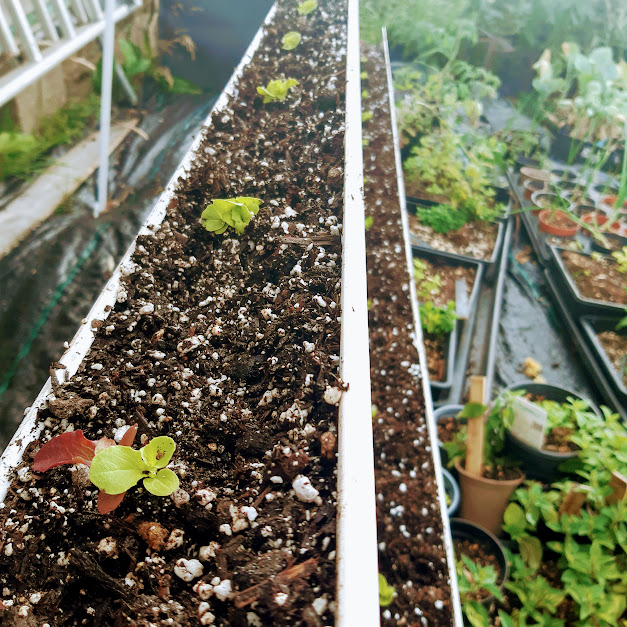
Planted up 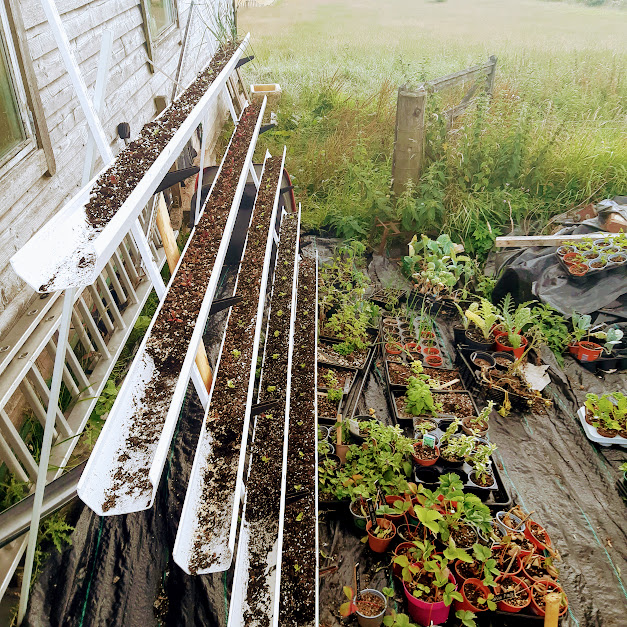
In position 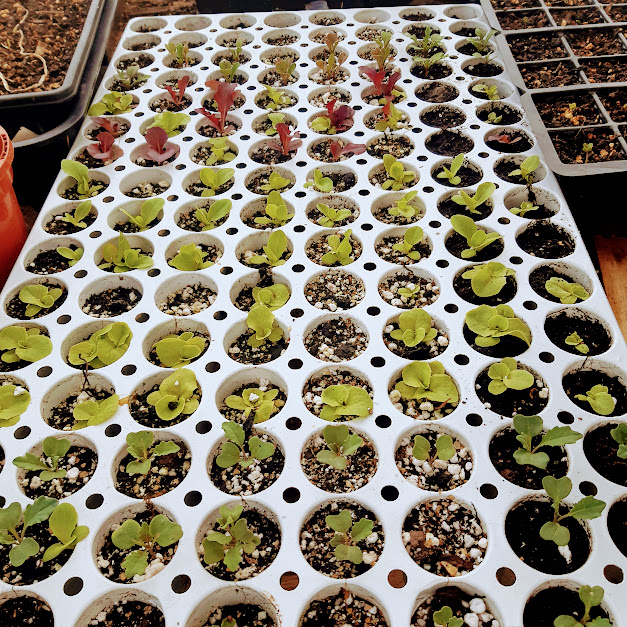
The seedlings
It’s been drizzly for the day so helped with outside watering. Two handfuls of Magnesium sulphate (epsom salts) were added to the big tank so the plants always get magnesium, critical for photosynthesis. When you consider most folk put half a bag of bath salts into their bath, a handful or two is nothing in 1000 litres, 264 us Gal.
Mick kindly dropped off another load of chippings, and they are steaming away. I’m going to use them to make compost by mixing equal parts of bokashi ferment, bark, mushroom compost and fresh horse manure. Another experiment….
Free Organic and Composting Workshop
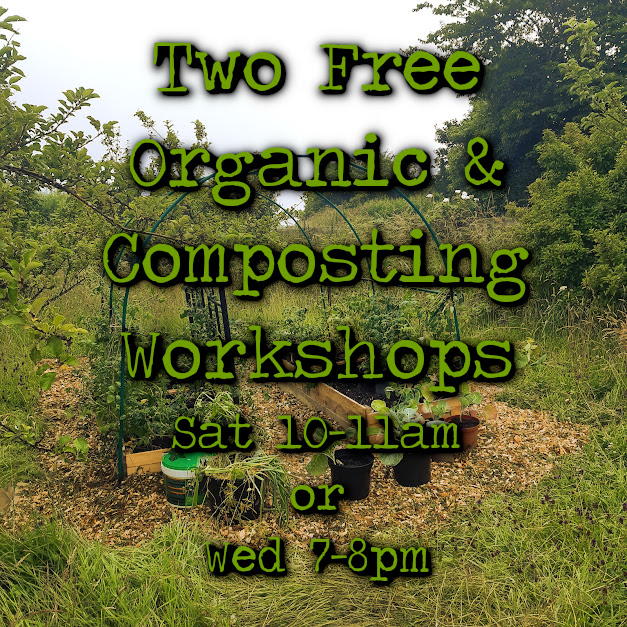
The two beginners workshops that ran on Saturday 10-11am and Wednesday 7-8pm, have now finished. Those slots are now open in the first week of August, replaced with a free Organic and Composting workshop. Please register by clicking this link. If you can’t register – drop me a note either by email, messenger or instagram.
The Workshop will take on two aspects of growing
- Grow naturally, without buying synthetic chemicals and pesticides. Discuss improving soil life, making organic feeds and teas to improve fertility, helping to reduce pests damage and increase yields. Korean Natural farming backbone of the course along with other ideas and concepts I like to use.
- Composting, in particular Bokashi composting, it’s a way of fermenting compost so it breaks down quickly. We’ll make activated bran and you can try this process at home.
The workshops will alternate every week, although there is a lot of cross over and synergy. This will allow some to ferment over a two week period.
At the end of the 6 – 8 week course you be more aware of how to improve soil, microbial life and make some simple plant feeds that don’t reek like a latrine. You’ll have made Bokashi compost from your kitchen waste and used it in the garden.
Everything will be provided on the workshop.
Here are a few things you can source so you can take things home to bring along.
- A couple of buckets with lids that click on, would be ideal to try Bokashi composting at home. Start with a little 1kg yogurt bucket or ice cream tub and scale up when you get the hang of it.
- Little bottles for amendments, feeds and anything else we make, you may take some home to try on your plants.
- A note pad and pencil
The course is free; there is no little asterisk with notes at the bottom with a 12 month contract. Donations are welcome, and help to keep things going. I’m not drawing a salary, but do eat some of the veggies to check if they are as good as I expect them to be, and it’s immensely satisfying to complete the cycle of life.
The three aims of The Sanctuary Garden are
1. To provide an escape, a place to forget about everything else and just enjoy being outside
2. To share knowledge, build on ideas and demystify gardening by doing, showing and explaining why, the background and sometimes the science. I’m a geek.
3. Share produce grown, particularly with those who have food insecurity.
The Sanctuary Garden is organic, has raised beds, a poly tunnel and is aiming to be zero waste by reducing and reusing, particularly when it comes to plastic.
Wood chips and tomato bed
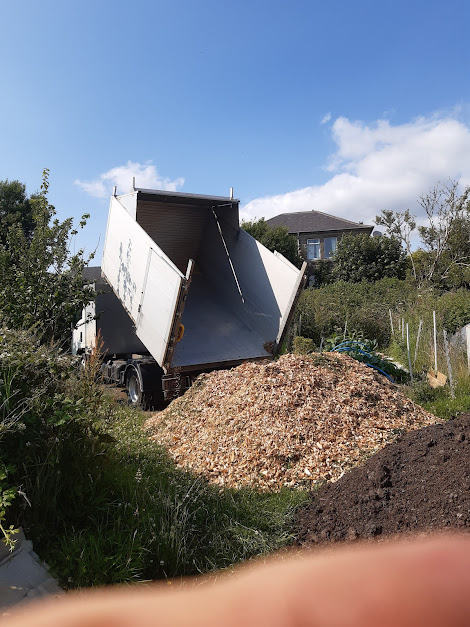
Chips being delivered by 247 Tree Surgery 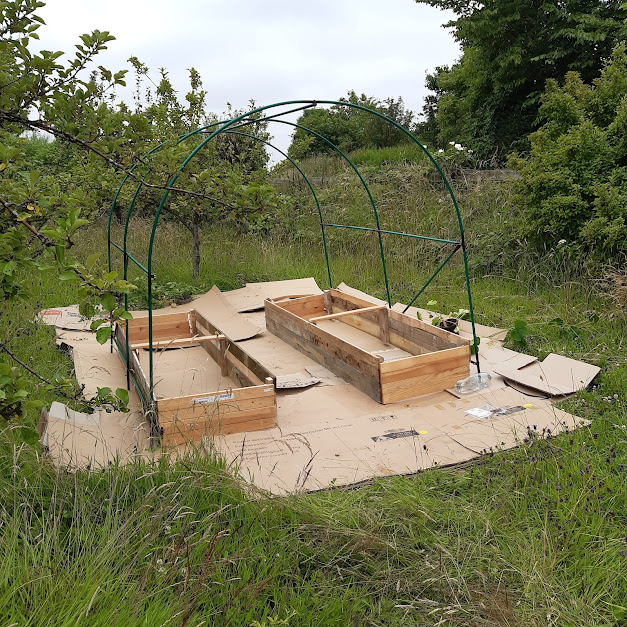
Beds made with pallets on cardboard 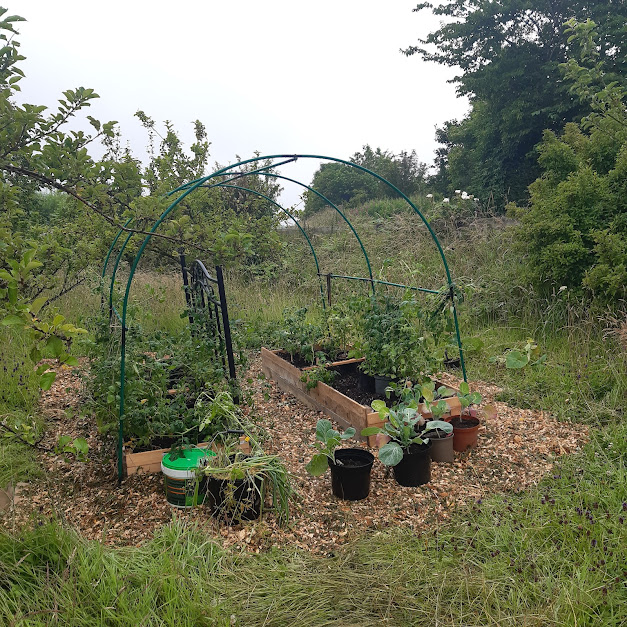
Planted up with wood chips finishing off the bed 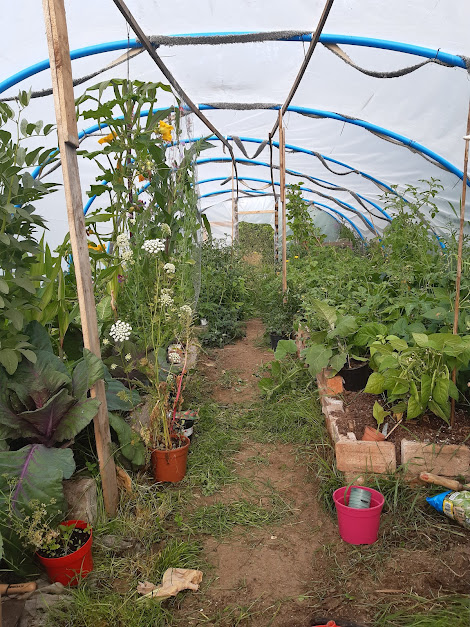
Poly Tunnel before 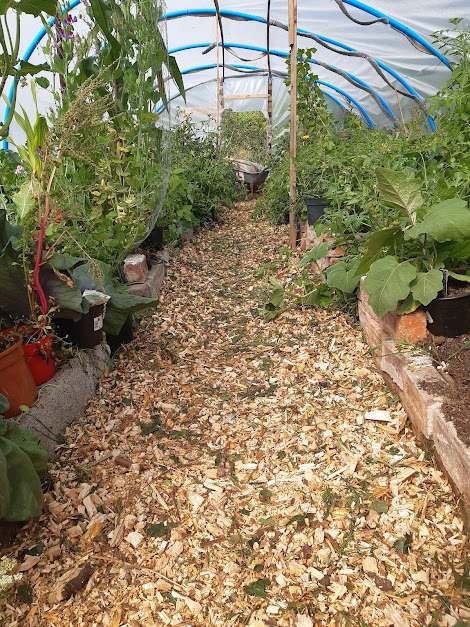
What a difference
Free Beginners Workshop
What is covered?
Everything for the course is provided although A few have regretted not bringing a notepad. The backdrop of these workshops is low cost, organic and demystification by explaining rather than rote learning. Korean natural farming is introduced and discussed in all the workshops. Details from upcoming workshops are discussed if relevant. Most of the time, I over-plant, so have seedlings to give away.
Powerpoint and whiteboards are not used, rather a show, tell and in some cases actually doing. Each week you can see what’s happening in the Sanctuary Garden. If there is produce you can taste raw, you get the chance to do that too. Bring a coat or jumper just in case the wind picks up.
Tea and coffee is available, you can make it to your desired strength and sweetness. In workshop #4 we’re in the kitchen and you’ll get to taste and enjoy produce from the garden and if I can, we can compare it against shop bought.
The donations we get, are spent on big things like water pumps and truckloads of compost. Seeds and plants are often donated or they are in “stock”. Grant is not paid, he’s loves pulling things out of skips, picking up free second hand pots and tools. His time putting the courses together and teaching are gratis. Most of the produce grown is either eaten on site or donated to food banks. The plants and Korean natural farming ‘liquids’ you take home are free too.
To sign up, just click this link, you can easily unsubscribe.

Workshop #1.
We go through how not to kill a plant, what kills seedlings and seeds. Types of compost, how to use vermiculite and perlite, sowing seeds, how and when to water. Choosing pot sizes for seeds, seedlings and final sized pots. What are smart pots, root bound plants, how roots and stems grow, preventing lopsided plants, and feeding plants.
If the weather is good, it’s all done outside, it’s touchy feely, interactive and the reasons why are explained to help demystify growing plants. We touch on how to grow veggies without spending a fortune on tools, pots, compost and seeds.
Workshop #2
Is hands on, you get to transplant some seedlings, of various sizes into pots. The tools you don’t need to buy, root size, when to plant out or pot on seedlings. How to grow herbs from live supermarket herbs that usually die by their ‘sell by’ date. Show how to take cuttings, plant them and talk about successes and failures.
Workshop #3
This is the details of some of the things touched in earlier workshops. We how to choose veggies, where to plant them in a bed, squarefoot planting, living soil, soil amendments, easy composting, pest control, raised beds and weeding. Saving seed, cross pollination and F1 seeds are covered too.
Workshop #4
This is a tasting experience, showing how to make pesto, hummus, lemonade, cookies with mint from the garden and how to oven dry cherry tomatoes, amongst other things. My recipes are probably a little more relaxed than Jamie Olivers, I used words like ‘a skoosh’ ‘dollop’ ‘handful’ but in most cases you’ll see the raw ingredients.
Workshop #5
How to plan what to grow and when. How to keep track of what’s in the garden, what to harvest and put seeds into soil. Depending on time of year, will depend on what’s covered, but will be the basis of planting all year round. For those of you who are super organised, you can take these simple systems further, I’m not a fan of paperwork or keeping on top of it but this works for gardeners rather than book keepers. It doubles as a planting reminder, journal and reference.
Wednesday Workshop #4
With brooding rain clouds and a forecast that confirmed rain, I moved the workshop into the kitchen. How to cook veggies and use herbs was a big part of the discussion of the last workshop so it was fitting. As I’m a mint fan and not really sure what to use mint with, other than in gin and mint sauce, I decided to find some recipes that used mint. All the recipes are by feel, so there are no real quantities.
Courgette, pea and mint soup.
Sara, my wife gave me the recipe and it is great hot or cold.
Chopped up courgette, I used 2, a hand full of pea pods from the garden, about a hand full or so, and covered with water and boiled gently until the courgette is soft. Emptied the contents into the liquidiser added the leaves of three stalks and wizzed. Served.
Hummus in 2 minutes
Open a tin of chickpeas, drian the liquid and add the liquidiser, squeeze the juice of half a lemon, add a little rind, a fat clove of garlic, a dollop of unflavoured yogurt, a crunch of salt and pepper and wizz. If it’s a little dry add more yogurt. It’s rather nice if it’s not too fine; wizz and adjust taste and consistency. It won the comparison taste test against shop bought hummus.
Beetroot Leaf Pesto
This pesto has been mentioned on many of the podcasts I listen to, so I thought I’d try it for the first time.
Handful of young beetroot leaves, I noticed I have a leaf miner while I was collecting them. Basil leaves, just a few, 100g of pine nuts, but you could easily use half that amount, the top 2/3 of a parmesan (Grana Padano Wedgecheese 160g) wedge, 60-80g as a guess, two fat cloves of garlic, lemon juice from the other half of the lemon and a generous glug of olive oil and wizz to the consistency you like. One of the children who does not like pesto devoured it.
Fresh lemonade
My mother shared this recipe with me, she had it when visiting my sister in law.
2 unwaxed lemons quartered, a generous amount of mint, sugar or stevia tablets (I used about 20) and water. Wizz in the liquidiser until a fine slurry and strain into a jug. Adjust sweetness by adding more stevia or sugar and add water if too sour. Trust me, it is delicious and would probably go very nicely with a spash of gin.
Choc Chip Cookies with fresh mint.
This is a secret recipe, so don’t share it…..;-)
You can halve this recipe.
300g sugar and 300g butter into the mixer and beat until creamed. Add 2 eggs, 3 tsp of vanilla essence, 2 tsp of baking powder, (not bicarb), three or four stalk of chocolate spearmint leaves (or any mint) and beat until mixed. Add 450g of plain flour, 200g of 70% coco chocolate roughly chopped into pea size chunks and mix until just combined together. Roll into balls about with a diameter of about an inch and half or 30/40mm onto baking paper on a tray and bake at 170C in fan oven for 12-15 minutes, just keep an eye on it for your oven. Let them cool, I know it’s irresistible, the chocolate seems to take ages to harden. Viola!
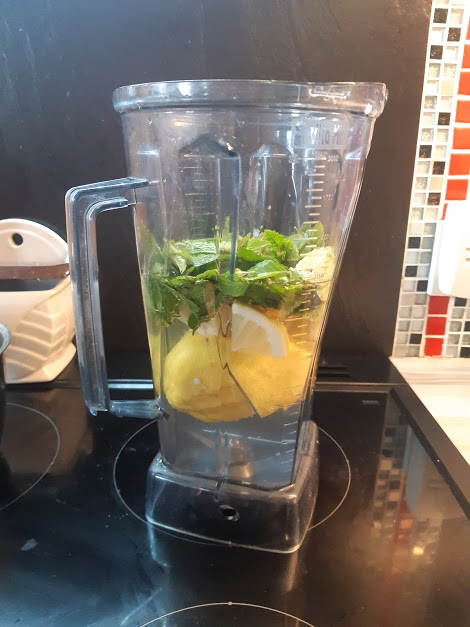
Lemon, mint and Stevia 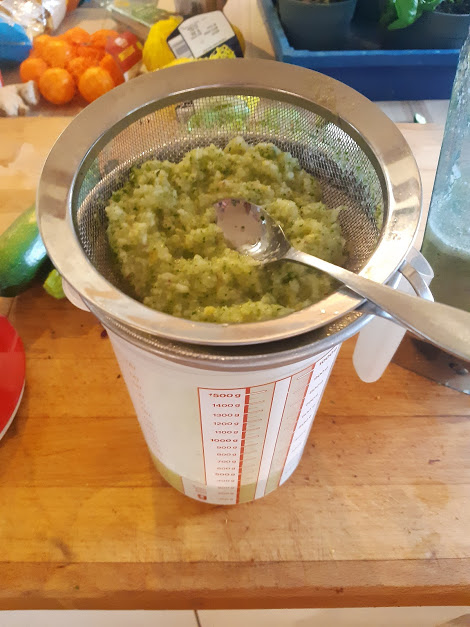
the pulp 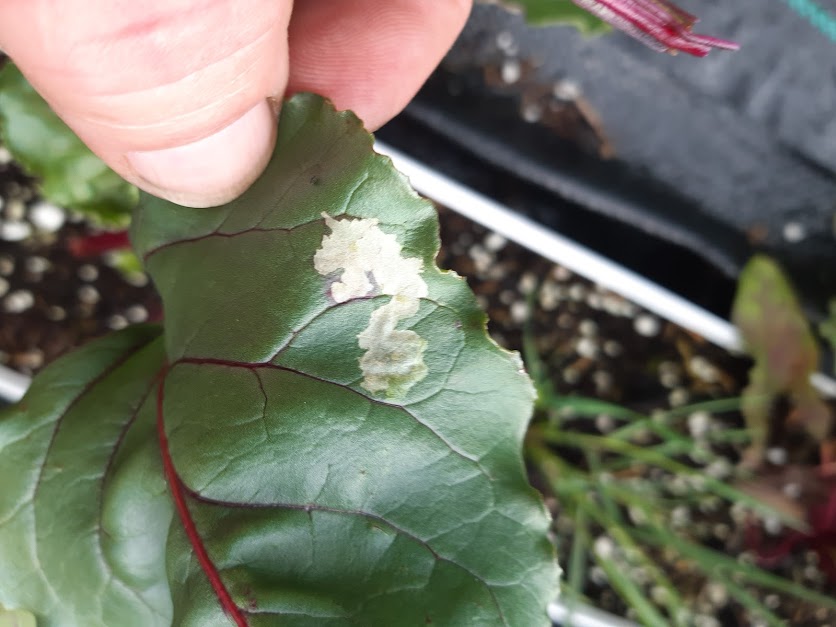
Leaf miner on beet leaf 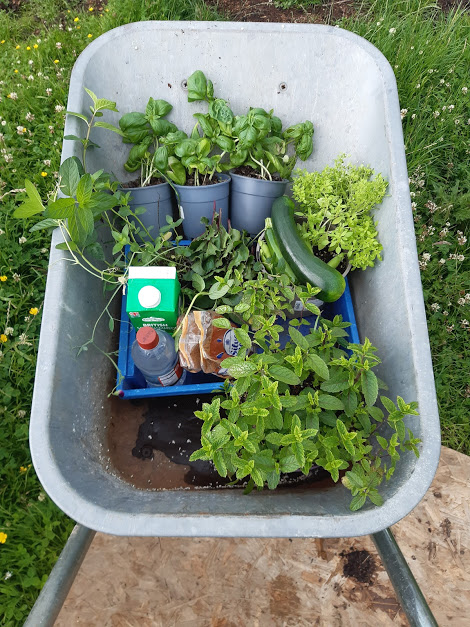
Ingredients from the garden
Helping in the community
Our Saturday workshop went well, numbers are fluctuating; some folks are going away on much needed holidays. We covered transplanting and spent some time discussing Korean Natural Farming (KNF) and we’ll cover that in more detail next week as we did on Wednesday’s course.
A new member of the Saturday group, is delighted with her strawberries and is keen to learn more about gardening. As always, plants were taken home and I later saw a photo of these pots sitting on slabs. I thought perhaps a raised bed would benefit and help keep her momentum going, aid learning and her mental health.
Today it was installed; 6 bags of compost, three of horse manure and a few veggie plants from The Garden, it was all put together and planted up in drizzly weather. My Vietnamese bamboo hat is fantastic for keeping off rain as well as sun.
All the plants will produce something over the summer keeping her interested and eating a variety of veggies.
Broadbeans, artichoke, purple brusselsprouts, lettuces, cabbage, parsley, chives and rosemary. We’ll replace them with overwintering crops when they are done.
